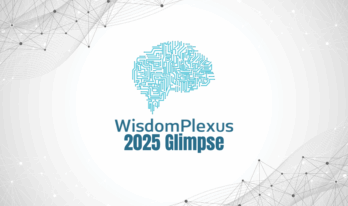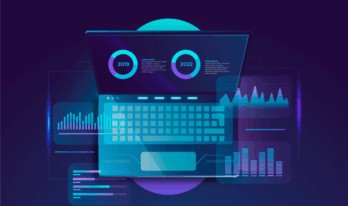AIOps and automation work like cause and effect. They collaborate big data and machine learning in IT Operations. Moreover, AIOps and automation help businesses achieve agility. It also helps achieve autonomous services in IT Operations.
Further, there have been many transformations in ITOps and its execution. Hence, AIOps uses its functions to automate IT and network operations.
According to Gartner, “AIOps combines big data and machine learning to automate IT operations processes, including event correlation, anomaly detection, and causality determination.”
AIOps also assists ITOps, DevOps, and SRE (Site Reliability Engineering) Teams. It helps execute tasks processes smarter and faster. As a result, it helps identify digital-service issues earlier and provides solutions. Hence, it prevents roadblocks, manages processes. It also helps with automation to achieve continuous services.
AIOps also reduces the requirement for human intervention for repetitive tasks. As a result, supporting businesses during the Covid-19 Pandemic.
Therefore, in this article, we will understand more about AIOps and automation as well as their effect on ITOps.
Understanding The Role of Automation in AIOps
What is IT Automation?
IT Automation is a method that creates software and systems that replace recurring processes and mitigate human intervention. Moreover, automating human tasks augments the execution of IT infrastructure and software. IT automation also enables software to initiate and repeat instructions, processes, and tasks run by policies. As a result, it saves time and increases the bandwidth for IT staff to contribute more towards strategies.
Further, IT automation encourages virtualized networks and cloud-based services the require immediate and complex management. Hence, automation becomes an indispensable strategy that supports IT teams to deliver services. Therefore, there is a significant improvement in speed, consistency, and security.
IT Automation is certainly a robust solution to scale business operations and provide cost-effectiveness. It also enables the IT teams can work towards strategies in admin work. Moreover, it automates the operations for data centers and the cloud that resulting in agility. Essentially, automation enhances IT environments to rapidly resolve errors and responses. Therefore, IT automation reduces delivery time and deploys production-ready resources in the system.
Hence, here are the potential applications of IT automation:
-
- Cloud Automation
- Resource Allocation
- Configuration
- Network Monitor and Management
- Security Automation and Responses
Advantages of IT Automation:
- Firstly, IT automation mitigates the requirement for resources to execute the repetitive and recurring processes. Hence, it enhances productivity while simultaneously reducing costs by optimizing resources.
- Moreover, performing repetitive and time-consuming tasks releases the IT teams to focus on higher-level tasks.
- It also accelerates operations for data centers and the cloud by decreasing service and resource delivery time from weeks to hours.
- Further, it enables consistency at a larger scale and reduces errors that may occur during manual processes.
- Most importantly, IT automation provides security and safeguards confidential data while reducing the probability of breaches.
- Above all, it executes tasks and processes like incident management, application deployment, and security & compliance.
What is AIOps?
AIOps or Artificial Intelligence in Operations uses a suite of tools and components to automate IT Operations. It also processes, identifies, and resolves issues that in turn reduce downtime. Moreover, AIOps uses Machine Learning algorithms to monitor systems. Hence, it enables the functions to perform tasks and identify issues and anomalies.
Moreover, businesses that adopt AIOps platforms increase their opportunities by supporting IT decision-makers. For example, Siemens, in collaboration with other security solutions provides additional cybersecurity against multiple levels of threat.
AIOps also functions despite the complexities of application environments, deploying public and private clouds, and the constant requirement to scale according to business objectives. It also leads to the evolution of IT infrastructures with software-defined solutions to change and reconfigure processes. Hence, AIOps uses dynamic technologies to manage processes within the infrastructures.
Here are the various levels at which modern IT environments manage complex operations:
-
- Systems
- Data
- Tools
Hence, AIOps uses components like machine learning and data science to offer solutions for any real-time issues. As a result, it helps understand the intensity of issues that may affect the availability and performance of digital services.
How does AIOps Work?
Firstly, businesses must deploy AIOps independently. Moreover, it collects data from various IT monitoring sources and operates as a central system for engagement.
As a result, here are the five key components that monitor IT operations in AIOps:
- Data Selection:
Businesses often generate large sets of data by executing various processes. Moreover, not all data is relevant to the build insights. Hence, the process of data selection helps filter out 99% of the data when there are problems detected.
- Pattern Identification:
While running through various sets of data, it is important to categorize them by correlating and identifying relationships between different sets. Therefore, identifying patterns within data sets provides meaning to data elements and groups them for advanced analytics.
- Inference:
Inference aka root cause analysis helps identify the fundamental cause of problems and recurring issues. Hence, it helps businesses perform the right actions once the problem is detected.
- Collaboration:For any business to flourish, it is pivotal for its departments and sections need to work synonymously. Moreover, this leads to alerting and notifying various operators and teams to enable collaborations. Further, due to remote work facilities, teams must secure data and expedite any future diagnosis of any issues.
- Automation:
AIOps automates as many responses and rectifications as possible. Hence, this leads to more accurate and faster insights and solutions.
Who is Using AIOps and for what functions?
- Enterprises with immense and complex environments utilize AIOps.
- SMEs access Cloud-Native technologies with AIOps.
- Organizations of various sizes use AIOps to support DevOps Teams.
- Businesses also use AIOps to manage and monitor Hybrid Cloud and On-Premise Environments.
- Moreover, businesses are currently experiencing Digital Transformations that utilize AIOps for their processes.
The Relation between AIOps and Automation
Automation is an important aspect of AIOps. Moreover, Artificial Intelligence functions as the brain, and Automation works as the muscle in AIOps. Further, AIOps has its applications in multiple sectors and industries worldwide.
AIOps and automation are important aspects of C-suite that strategize functions throughout organizations. Hence, they gain digital excellence by enabling solutions in complex IT environments.
Businesses work with their respective CFOs and CIOs in the decision-making process. Further, these decision-makers procure insights from AIOps and automation functions for more accuracy.
Importance of Automation in AIOps
-
Accelerating IT Operations
Automation transforms the way businesses manage their operations. Moreover, automation provides solutions to integrate infrastructures with AIOps. It also simplifies lifecycle management to compute, store, and transfer data through networks.
Therefore, automation helps AIOps to manage and optimize operations independently. Hence, with the help of AI, automation accelerates its functions and accelerates the time-to-production which keeps ITOps stable and reliable.
-
Long-Term Business Goals
As businesses expand, so do their requirements for resources and solutions to gain more opportunities. Further, AIOps provides businesses with automation that is intelligent and reliable. Automation plays an important role in AIOps as it advances practical implementations into various processes.
Firstly, it mitigates the requirement for human intervention in various repetitive tasks. Although, it retains human resources and increases their opportunities to manage insights. Automation also functions as an assistant to human resources and improves productivity. Hence, AIOps and automation expand the horizons for businesses and provides solutions to long-term objectives.
-
Transforming ITOps and Enterprise Services:
Businesses today are looking for easy, accessible, and comprehensive technologies to support ITOps and enterprise services. Moreover, there is a crucial requirement to capture the knowledge and expertise of service managers, specialists, domain experts, subject matter experts, etc. Hence, automation and AIOps orchestrate all business processes and workflows.
Moreover, automation makes it accessible for management and experts to easily engage with systems developing its UI. Therefore, with this engagement, they procure and provide insights into the systems and technologies.
Why do Businesses need to Adopt AIOps and Automation?
Businesses are looking forward to leveraging the abilities of automation and AIOps. Further, this trend encourages businesses to make investments in technologies that would benefit all functions and provide more opportunities.
Hence, here are the top reasons for Businesses to adopt AIOps and Automation:
-
- It provides cost efficiency and increases productivity.
- Moreover, it enhances the performance within the system and infrastructure by reducing MTTR (mean time to recovery).
- It also develops ITOps and makes it more reliable by reducing errors.
Conclusion:
In conclusion, AIOps, and automation help resolve critical, unpredictable, and high-value issues. Further, AIOps and automation combine their abilities to manage activities for strategic management with the help of experts and decision-makers.
Recommended For You:




